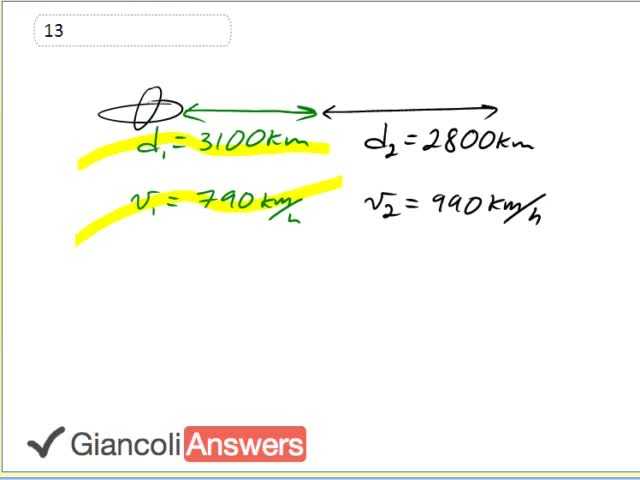
b)

In order to watch this solution you need to have a subscription.
We’re told that the first leg of his airplane’s trip is one thousand three hundred kilometers and it travels at the speed of seven hundred and ninety kilometers per hour. The second leg is two thousand eight hundred kilometers and travelling at nine hundred and ninety kilometers an hour because of the tail wind that speeds it up. We’re going to find the time it takes to do each of these legs, so ‘t1’ is: ‘d1’ divided by ‘v1’ which is three thousand one hundred kilometers divided by seven hundred and ninety kilometers an hour giving three point nine two four hours. The second leg of the trip ‘t2’ takes: ‘d2’ divided by ‘v2’ which is two thousand eight hundred kilometers divided by nine hundred and ninety kilometers an hour giving two point eight two eight hours. So to answer the first part of the question, the total time is ‘t1’ plus ‘t2’ which is: three point nine two four hours plus two point eight two eight hours giving a total of six point seven five two hours which in two significant figures is six point eight hours. The average speed is slightly tricky, you can't take a simple arithmetic average of both of these speeds, you can't go: seven ninety plus nine ninety divided by two. That doesn’t work because these speeds occur for different periods of time. So instead we’ll use the definition of average speed which is: total distance divided by total time. You’ll never go wrong with this formula on an average speed question. So average speed is one thousand three hundred kilometers plus two thousand eight hundred kilometers divided by six point seven five two hours, notice I’m using lots of digits instead of the six point eight because this is an intermediate calculation you don’t want to use a rounded calculation you only round off final answers, we get eight point seven times ten raised to power two kilometers per hour. In the 5th Edition, the first leg is only two thousand one hundred kilometers and it travels at eight hundred kilometers an hour and the second leg is one thousand eight hundred kilometers and it goes at one thousand kilometers an hour. Substituting those numbers here, the first leg has a time of two point six two five hours and the second leg takes one point eight hours, adding those together gives us the 5th Edition total time of four point four two five which we’ll round to four point four hours. The average speed is: two thousand one hundred kilometers plus one thousand eight hundred kilometers divided by four point four two five hours giving us the 5th Edition average speed of eight point eight times ten raised to power two kilometers per hour.